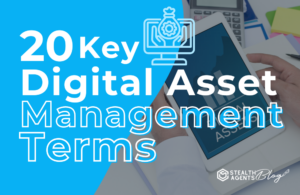30 E-commerce Success Key Terms
Welcome to the world of e-commerce!
As a business owner, you’ve probably heard a lot of different terms thrown around when it comes to running an online store.
-
Conversion Rate: The percentage of visitors who take a desired action, such as making a purchase.

-
SEO (Search Engine Optimization): Enhancing website visibility in search engine results to drive organic traffic.

-
CPC (Cost Per Click): The cost an advertiser pays each time a user clicks on an online ad.

-
CTR (Click-Through Rate): The ratio of users who click on a specific link to the number of total users who view a page, email, or advertisement.

-
Shopping Cart Abandonment: When a customer adds products to their cart but leaves the site without completing the purchase.

-
Customer Lifetime Value (CLV): The total revenue a business can expect from a single customer account.

-
Dropshipping: A fulfillment method where a store doesn’t keep the products it sells in stock; instead, when a store sells a product, it purchases the item from a third party and has it shipped directly to the customer.

-
Retargeting/Remarketing: Online advertising that targets users who have previously visited your website with banner ads on display networks across the web.

-
A/B Testing: Comparing two versions of a web page to see which one performs better in terms of conversions.

-
Affiliate Marketing: A marketing arrangement by which an online retailer pays commission to an external website for traffic or sales generated from its referrals.

-
Bounce Rate: The percentage of visitors who navigate away from the site after viewing only one page.

-
Churn Rate: The percentage of customers who stop using or subscribing to a service during a given time period.

-
Customer Acquisition Cost (CAC): The cost associated with convincing a customer to buy a product/service, including research, marketing, and advertising costs.

-
Inventory Management: The supervision of non-capitalized assets, or inventory, and stock items.

-
Omnichannel Retailing: A multichannel approach to sales that seeks to provide the customer with a seamless shopping experience whether they are shopping online from a desktop or mobile device, by telephone, or in a brick-and-mortar store.

-
Payment Gateway: A merchant service that processes credit card payments for e-commerce sites and traditional brick and mortar stores.

-
Product Feed: A file containing a list of products and attributes of those products organized so that each product can be displayed, advertised, or compared in a unique way.

-
Responsive Design: A web design approach aimed at crafting sites to provide an optimal viewing experience across a wide range of devices (from desktop monitors to mobile phones).

-
Social Commerce: The use of social network(s) in the context of e-commerce transactions.

-
SSL Certificate (Secure Sockets Layer): A standard security protocol for establishing encrypted links between a web server and a browser in online communications.

-
Upselling: A sales technique whereby a seller induces the customer to purchase more expensive items, upgrades, or other add-ons in an attempt to make a more profitable sale.

-
Cross-selling: Suggesting related products or services to a customer who is considering buying something.

-
User Experience (UX): The overall experience of a person using a product such as a website or a computer application, especially in terms of how easy or pleasing it is to use.

-
Web Analytics: The measurement, collection, analysis, and reporting of web data for purposes of understanding and optimizing web usage.

-
Fulfillment: The process of receiving, packaging, and shipping orders for goods.

-
Marketplace: An online platform where third-party sellers list their products or services for sale (e.g., Amazon, eBay).

-
Mobile Commerce (m-commerce): Buying and selling of goods and services through wireless handheld devices such as smartphones and tablets.

-
Personalization: The practice of creating a user experience individually tailored to each visitor by using data and algorithmic software to serve relevant content, product recommendations, and targeted advertising.

-
Return on Investment (ROI): A measure used to evaluate the efficiency of an investment or compare the efficiency of a number of different investments.

-
Wholesale: The sale of goods in large quantities at low prices to be retailed by others.

To sum it up, understanding the key terms in e-commerce is crucial for success. By familiarizing yourself with important concepts like SEO, conversion rates, and customer acquisition costs, you can make informed decisions and optimize your online business.









